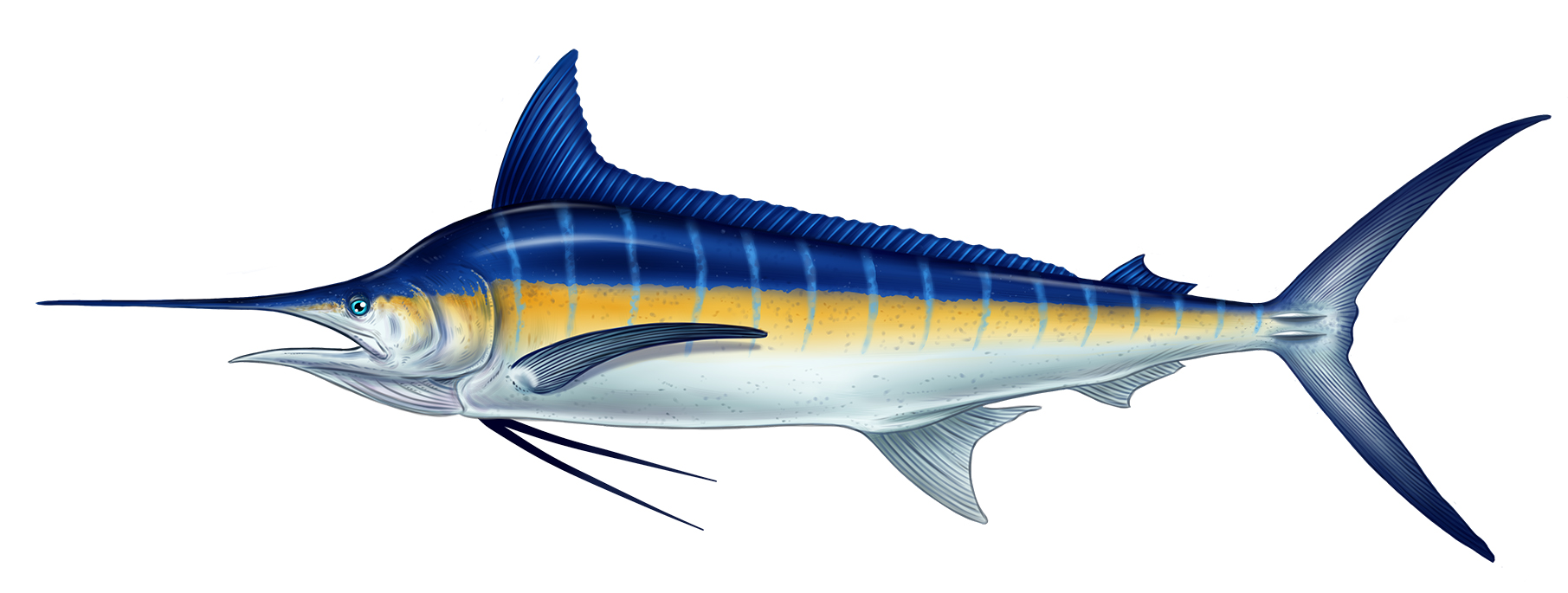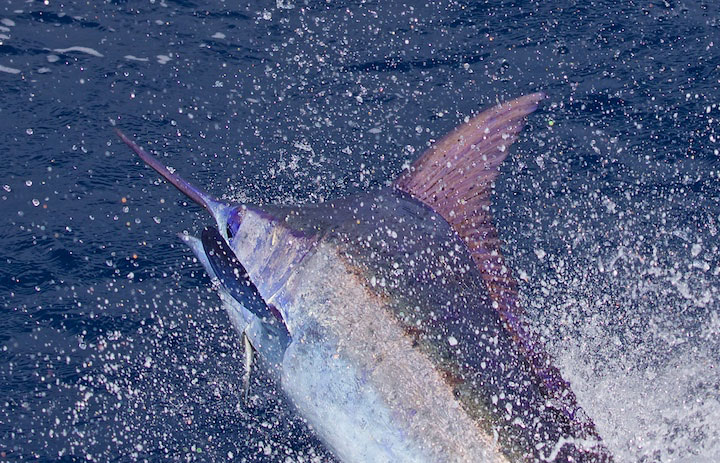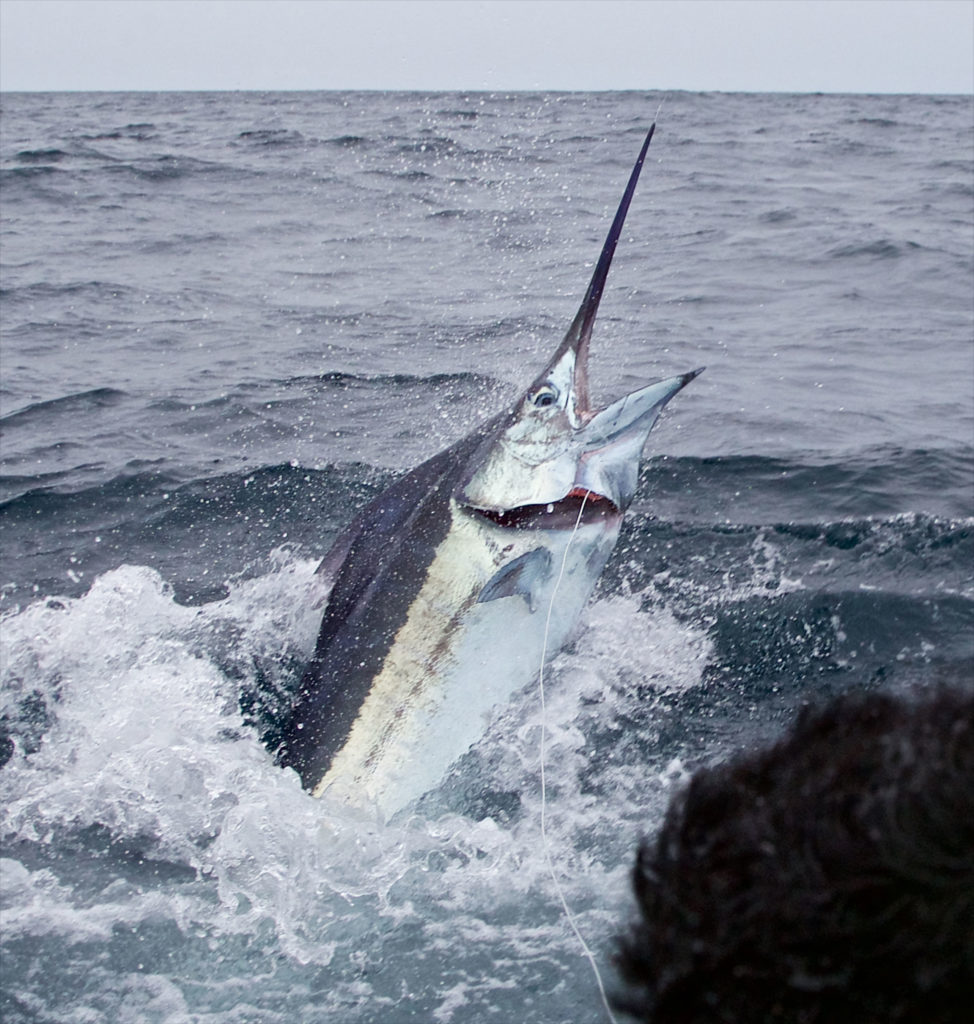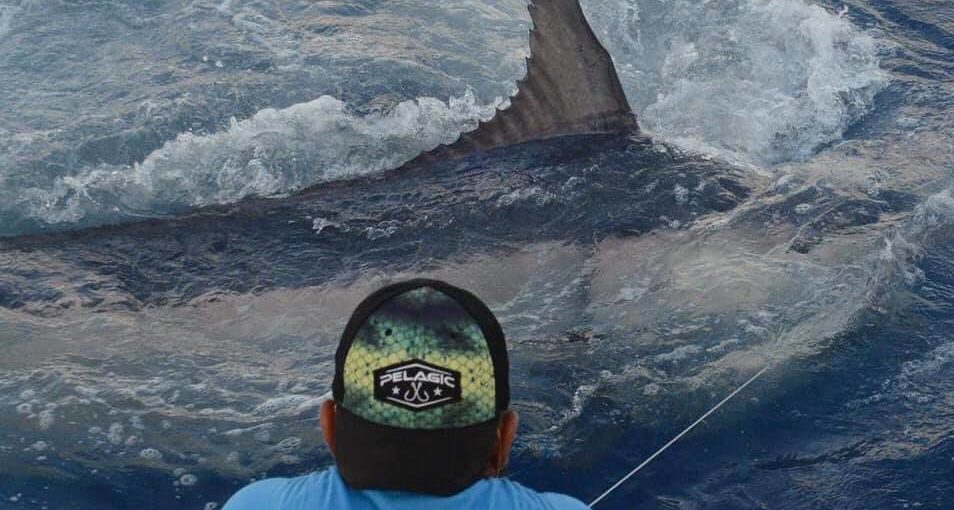FECOP Costa Rica Fishing Species
Pacific Blue Marlin

WHERE TO FIND MARLIN IN COSTA RICA: Marlin can be found all along Costa Rica’s Pacific Coast. They are a pelagic and migratory species which means they live near the surface in deep, off-shore waters. They typically are found in warmer tropical waters between 70-85 degrees, which Costa Rica has year round.
Marlin Time in Costa Rica: Marlin can be and have been caught year round in Costa Rica. Historically, the best months for blue marlin in the Southern and Central Pacific regions of Costa Rica (Osa Peninsula, Quepos, Jaco) are November through January. Most years there is usually a ‘second run’ of marlin around June and July which may include an increase in black and striped marlin mixed in with the blues. Marlin are also found in the northwestern part of Costa Rica – Guanacaste from May to September when the bite then moves north along the coast with the drier weather and warmer waters.
Marlin Facts – Did You Know:
- Sometimes referred to as “The Lady in Blue”
- Average life span: 27 years (females); 18 years (males)
- It is illegal to take a sailfish or marlin out of the water for photos in Costa Rica
- Marlins are “Catch and Release” ONLY fish – Learn why it is against the law to remove these fish from the water in Costa Rica
- Best time of year to catch a Pacific blue marlin in Costa Rica – Year round peaking in Nov – January and again in April – times vary depending on which part of Costa Rica you are fishing – contact your Costa Rica guide or lodge for details.
- The Blue marlin is very large fish. Females are 3 to 4 times larger than males. Larger specimens can reach 14 feet in length and weight of almost 2000 pounds. On average, blue marlin usually reaches 11 feet in length and between 200 and 400 pounds in weight.
- Dorsal (back) side of blue marlin is dark blue while the belly is silver white in color.Blue marlin has elongated body, long tail, pronounced dorsal fin and sharp, spear-shaped upper jaw.
- Blue marlin uses its spear-shaped jaw to stun, corral and catch food. It feeds on crustaceans, fish (mackerel, tuna), dorado and squids.
- During the hunt, blue marlin will pass through a dense school of fish and inflict injuries with its spear. Dead or injured fish will float around and blue marlin will easily scoop them afterwards.
- Blue marlin relies on the eye sight to find food. It hunts during the day (diurnal animal).
- Blue marlin has 24 vertebrae which allow fast movement through the water. It reaches the speed of 60 miles per hour.
- Because of their large size and sharp spear-shaped jaw, blue marlins have only couple of predators: white sharks, mako sharks and humans.
- Blue marlins are very active and strong animals. They like to leap out of the water. Also, they will show powerful and acrobatic movements while trying to release of the hook.
- Blue marlins are solitary creatures. Sometimes they swim in pairs. Rarely, they will gather in larger groups (schools).
Blue marlins are migratory species. They will move from one location to another to escape low water temperatures (they prefer life in warm waters). - Mating season of blue marlins takes place late in the summer or early in the autumn.
- Females become sexually mature when they gain the weight of 265 pounds. Males reach sexual maturity at the age of three years.
- Females are able to spawn 4 times per single mating season, releasing up to 7 million eggs. Only small percent of released eggs (less than 1%) will survive until the adulthood.
- Majority of eggs will be eaten by other marine creatures.
- Current Pacific World Record:1,376 – Females can reportedly grow to 1,998lbs
- Common Name: Blue Marlin
- Size: Up to 14 ft

On any day of the year it is possible to release (catch and release species by law in Costa Rica) a Pacific blue marlin in Costa Rica (Pacific) but recorded releases are historically highest from November to January when the big dorado run is on. There is also a small peak in April as sailfish numbers drop. July through September there is a better chance at a black or striped marlin mixed in with the blues in Costa Rica
More About the Pacific Blue Marlin
Lacepede, 1802; ISTIOPHORIDAE FAMILY
From IGFA Fish Database
 This pelagic and migratory species occurs in tropical and warm temperate oceanic waters. In the Atlantic Ocean it is found from 45°N to 35°S, and in the Pacific Ocean from 48°N to 48°S. It is less abundant in the eastern portions of both oceans. In the Indian Ocean it occurs around Ceylon, Mauritius, and off the east coast of Africa. In the northern Gulf of Mexico its movements seem to be associated with the so called Loop Current, an extension of the Caribbean Current. Seasonal concentrations occur in the southwest Atlantic (5°-30°S) from January to April; in the northwest Atlantic (10°-35°N) from June to October; in the western and central North Pacific (2°-24°N) from May to October; in the equatorial Pacific (10°N-10°S) in April and November; and in the Indian Ocean (0°-13°S) from April to October.
This pelagic and migratory species occurs in tropical and warm temperate oceanic waters. In the Atlantic Ocean it is found from 45°N to 35°S, and in the Pacific Ocean from 48°N to 48°S. It is less abundant in the eastern portions of both oceans. In the Indian Ocean it occurs around Ceylon, Mauritius, and off the east coast of Africa. In the northern Gulf of Mexico its movements seem to be associated with the so called Loop Current, an extension of the Caribbean Current. Seasonal concentrations occur in the southwest Atlantic (5°-30°S) from January to April; in the northwest Atlantic (10°-35°N) from June to October; in the western and central North Pacific (2°-24°N) from May to October; in the equatorial Pacific (10°N-10°S) in April and November; and in the Indian Ocean (0°-13°S) from April to October.
A Japanese report indicates that the blue marlin is the largest of the istiophorid fishes. It apparently grows larger in the Pacific. All giant marlins are females, and male blue marlin rarely exceed 300 lb (136 kg). The pectoral fins of blue marlin are never completely rigid, even after death, and can be folded completely flat against the sides except in the largest specimens. The dorsal fin is high and pointed anteriorly (rather than rounded) and its greatest height is less than the greatest body depth. The anal fin is relatively large and it too is pointed. Juveniles may not share all the characteristics listed above, but the peculiar lateral line system is usually visible in small specimens. In adults it is rarely visible unless the scales or skin are removed. The vent is just in front of the anal fin, as it is in all billfish except the spearfish. The back is cobalt blue and the flanks and belly are silvery white. There may be light blue or lavender vertical stripes on the sides, but these usually fade away soon after death, and they are never as obvious as those of the striped marlin. There are no spots on the fins.
They are known to feed on squid and pelagic fishes, including tuna and mackerel. A powerful, aggressive fighter, they run hard and long, sound deep, and leap high into the air in a seemingly inexhaustible display of strength. Fishing methods include trolling large whole baits such as bonito, dorado, mullet, mackerel, ballyhoo, flying fish and squid as well as various types of artificial lures and sometimes strip baits.

Some taxonomists believe that the Atlantic and Pacific blue marlins are closely related but separate species. They apply the scientific name Makaira nigricans, Lacepede, 1892, to the Atlantic species only and the name Makaira mazara (Jordan & Snyder, 1901) to the Pacific and Indian Ocean species. Others treat the two populations as subspecies, Makaira nigricans nigricans and Makaira nigricans mazara
Black or Blue? – It is hard for most captains and anglers to tell the difference at times unless they are close to the fish. At closer range, one can be quickly and positively identified since it is the only marlin that have rigid pectoral fins that cannot be folded flat up against the body without breaking the joints. It is also set apart by the airfoil shape of the pectoral fins and by its very short ventral fins, which almost never exceed 12 in (30 cm) in length, regardless of the size of the fish. The first dorsal fin is proportionately the lowest of any billfish, usually less than 50 percent of the body depth. The body is laterally compressed, rather than rounded; much more so than in similar sized blue marlin.
World Record Details from Marlin Magazine:
 Note: It is against the law in most countries to remove billfish from the water for photos – These are catch and release fish ONLY – To learn more read Leave the fish in the water, why your dream photo isn’t worth it – by Todd Staley
Note: It is against the law in most countries to remove billfish from the water for photos – These are catch and release fish ONLY – To learn more read Leave the fish in the water, why your dream photo isn’t worth it – by Todd Staley
On May 31, 1982, angler Jay de Beaubien caught the biggest Pacific blue marlin ever recorded by the International Game Fish Association while he was fishing aboard No Problem, a 43-foot Merritt captained by Bobby Brown. The bite took place at approximately 1 p.m. while they were trolling a silver and blue Kita lure off Kona, Hawaii. According to the angler’s account, “All hell broke loose with that first run.” Within minutes, the fish had nearly emptied the spool. However, despite several strong runs and the immense size of the fish, de Beaubien and the crew had the fish boat-side in just 40 minutes. Not long after, the crew officially weighed the 1,376-pound blue marlin, bringing the All-Tackle record back to Kona where it has remained ever since. This photo is for historical purposes only, it is illegal to remove billfish from the water.
Related Articles
Leave the billfish in the water, why your dream photo isn’t worth it
How to safely handle a sailfish or marlin
How to estimate the size of a sailfish or marlin
What is the Costa Rica Tuna Decree?
An Introduction to Pacific Sailfish – Sailfish for Dummies



















